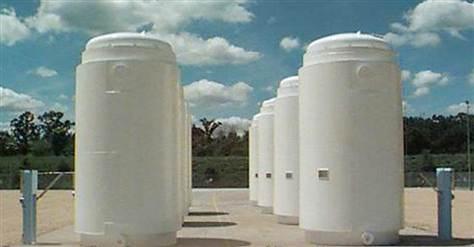Recently, the Union of Concerned Scientists obtained documents under FOIA from the Nuclear Regulatory Commission regarding its response to the 9/11 attacks. They show the important role that IPS played in protecting Americans from future attacks.

Hardened Dry Nuclear Fuel Cask. (c) Department of Energy
Behind the scenes, however, the NRC apparently worried much more about the risks to spent fuel pools than it was willing to admit publicly. The NRC apparently made mitigation of risks to spent fuel pools more of a priority than mitigation of risks to reactors and containment buildings. Officials reordered the development of a set of requirements in response to the 9/11 attacks to address spent fuel pools first.
The document cites this change as a “response to heightened public and congressional interest in the potential vulnerability of the [spent fuel pools]stemming from the January 31, 2003, paper by Robert Alvarez, Reducing the Hazards from Stored Spent Power-Reactor Fuel in the United States.”
Now in the aftermath of the Fukushima nuclear disaster, President Obama’s Blue Ribbon Commission on America’s Nuclear Future cites the IPS paper in its draft report issued in July as a reason for endorsing the measures to increase spent reactor fuel storage in hardened, dry containers.